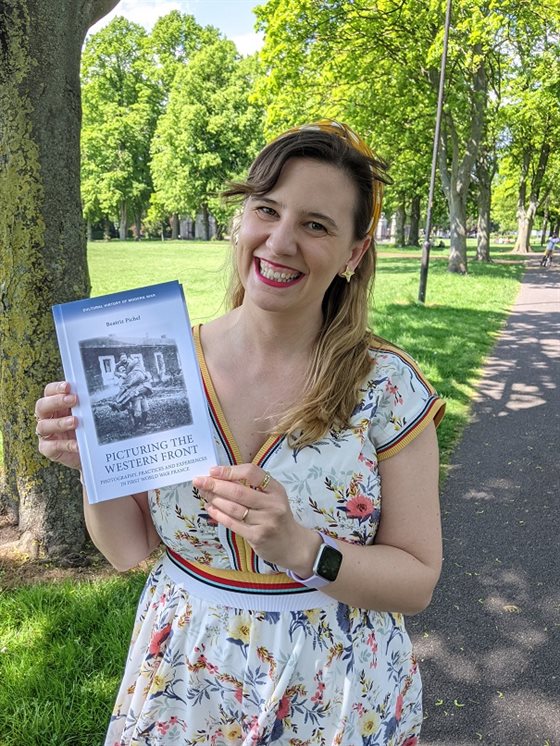Photographs taken during the First World War teach us so much more about history than just what is pictured, argues an expert from De Montfort University Leicester (DMU).
In her latest book, ‘Picturing the Western Front’, Dr Beatriz Pichel delves into French archives of photos taken during the First World War, exploring how photographic practices shaped combatants and civilians’ war experiences.

Dr Beatriz Pichel
“There are lots of assumptions about photographs, especially those taken during wartime,” explained Dr Pichel, a senior lecturer in Photography History at DMU.
“We assume that photos are windows to the past and that what we see in front of us tells the exact story of what happened. But it’s not just about what we see in the image.
“Doing photography – taking pictures, posing for them, exhibiting, cataloguing and looking at them –allowed combatants and civilians to make sense of what they were living through too.”
Dr Pichel, whose research examines photographic practices in France in the nineteenth and early twentieth centuries, argues that looking beyond what is pictured in a photo can help establish a more detailed perspective of what life was like during that time.
“Photography mattered during the war because it enabled combatants and civilians to record events, establish or reinforce bonds with one another, represent bodies, place people and events in imaginative geographies and making things visible, while making others, such as suicide, invisible,” she continued.
“In all my years of studying photographic history, I have only ever come across one image that depicted suicide. This side of war was never photographed during the First World War but that’s not to say it didn’t happen.
“If we only value photography by the images in front of us, we are missing so much.”
Picturing the Western Front documents the many different sides to the First World War in France, including the more light-hearted times shared between soldiers.
“One of the photos I really love is of some French soldiers in a hospital with British nurses, where they have dressed in the nurses’ clothes, posing and smiling to camera,” continued Dr Pichel. “Another one that made me laugh was of soldiers pretending to flirt with statues.
“I also came across a series of photos of a couple in 1919 on their honeymoon. They had gotten married just after the war finished and the photos were of them in places the veteran had fought in.
“There are so many examples of photos that you would not think were taken in a war context and I think it’s important to share those. It’s not just about images taken on the battlefield, it’s about the emotions that soldiers – and civilians – were experiencing during that time.”
Dr Pichel hopes her new book will allow historians to see how photographs can be interpreted differently to understand the past and also how important it is to consider the events and emotions that were never captured on camera.
“We tend to rely on written testimonies and on what we see in front of us to learn about history,” she added. “I hope that more people understand how to look beyond what is pictured and think about what was happening behind the camera.”
Dr Beatriz Pichel’s new book ‘Picturing the Western Front’ is available through Manchester University Press.
Posted on Tuesday 27 July 2021